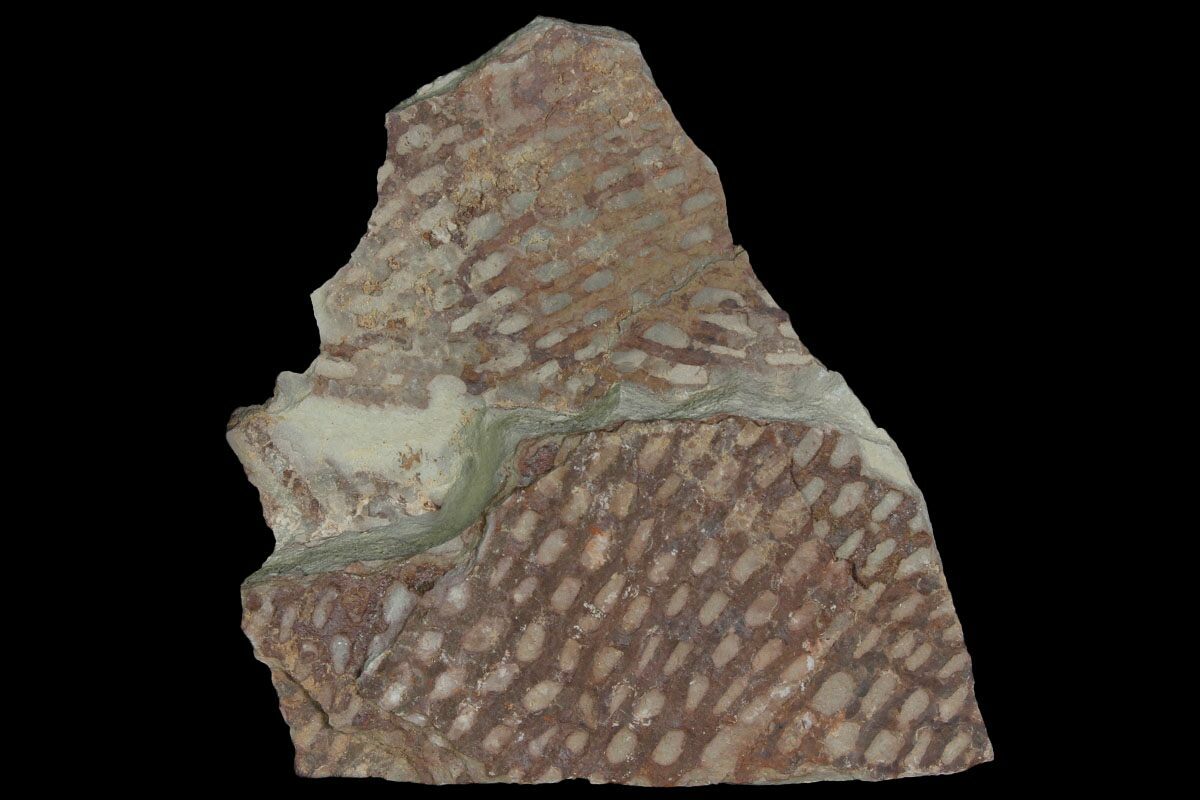

Graptolites are normally preserved as a black or white carbonized film on the rocks surface, and sometimes may be difficult to see, but by slanting the specimen to the light they reveal themselves as a shiny marking. This latter type (the graptoloidea) were planktonic and were successful and prolific until the early part of the Devonian period when they died out, to be survived by the more primitive dendroid graptolites. The graptolites which have few branches were derived from the dendroid graptolites at the beginning of the Ordovician period.

They are more primitive and were generally rooted to the sea-floor. The dendritic or branching type are known as dendroid graptolites (dendroidea). Their remains may be mistaken for fossil plants.

They vary in shape, but are most commonly dendritic or branching (such as Dictoyonema), saw-blade like, or "tuning fork" shaped (such as Didymograptus murchisoni). Graptolite fossils are found flattened along the bedding plane of the rocks in which they occur. Some well preserved graptolites are found in limestones and cherts, but generally these rocks were deposited in conditions which were favorable for bottom-dwelling life, including scavengers, and undoubtedly most graptolite remains were generally eaten by other animals. The dead planktonic graptolites, having sunk to the sea-floor, would eventually become entombed in the sediment and are thus well preserved. Grapolite fossils are often found in shales and slates where sea-bed fossils are rare, this type of rock having formed from sediment deposited in relatively deep water that had poor bottom circulation, was deficient in oxygen, and had no scavengers. The fossils themselves are small, often resembling rice grains. Some forms of graptolite lived attached to the sea-floor by a root-like base. Many graptolites appear to have been planktonic, drifting freely on the surface of ancient seas or attached to floating seaweed by means of a slender thread. The graptolites are classed as hemichordates (phylum Hemichordata), a primitive group which probably shares a common ancestry with the vertebrates. Originally regarded as being related to the hydrozoans, graptolites are now considered to be related to the pterobranchs, a rare group of modern marine animals. The biological affinities of the graptolites have always been debatable. The number of branches and the arrangement of the thecae are important features in the identification of graptolite fossils. Each subsequent sicula was housed within a tubular or cup-like structure (called thecae). Fossil graptolite Tetragraptus fruticosus from the Ordovician of AustraliaĮach graptolite colony is known as a rhabdosome and had a variable number of branches (called stipes) originating from an initial individual (called a sicula).


 0 kommentar(er)
0 kommentar(er)
